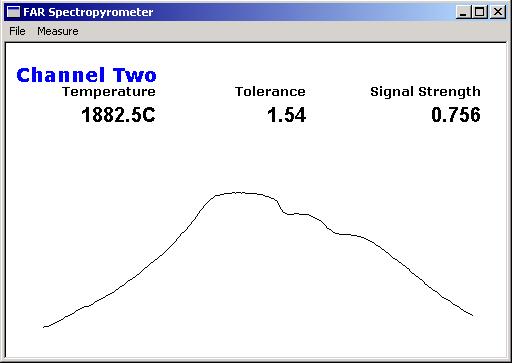Tolerance
tol-er-ance n. the amount of variation … from a standard — Webster’s New World Dictionary, Third College Edition
The tolerance, as presented by a FAR SpectroPyrometer, is a real-time value that defines how well the temperature is known. FAR SpectroPyrometers measure hundreds of wavelength/intensity pairs at a time and have the ability to calculate literally hundreds of thousands of temperature values for each measurement. The average of the multiple temperatures calculated is the value reported by the SpectroPyrometer. The standard deviation of the average is what we call the tolerance. A small tolerance, typically a few degrees Celsius, means that the hundreds of thousands of virtual pyrometers tested by the SpectroPyrometer agree to within that value. For example, in the screen below we read the results as 1882.5 ± 1.5°C, where 1882.5 is the average temperature and 1.5 is the tolerance.
Think of the power of this unique feature. Other pyrometers give you just a temperature value; the only guidance to the accuracy of that temperature is a specification in the manufacturer’s manual that describes the behavior of the whole class of instruments on an ideal target in a laboratory. The FAR SpectroPyrometer gives you the accuracy of its temperature determination right here, right now. Which do you think will be more helpful when you’re trying to figure out the cause of a manufacturing problem or a research issue?

